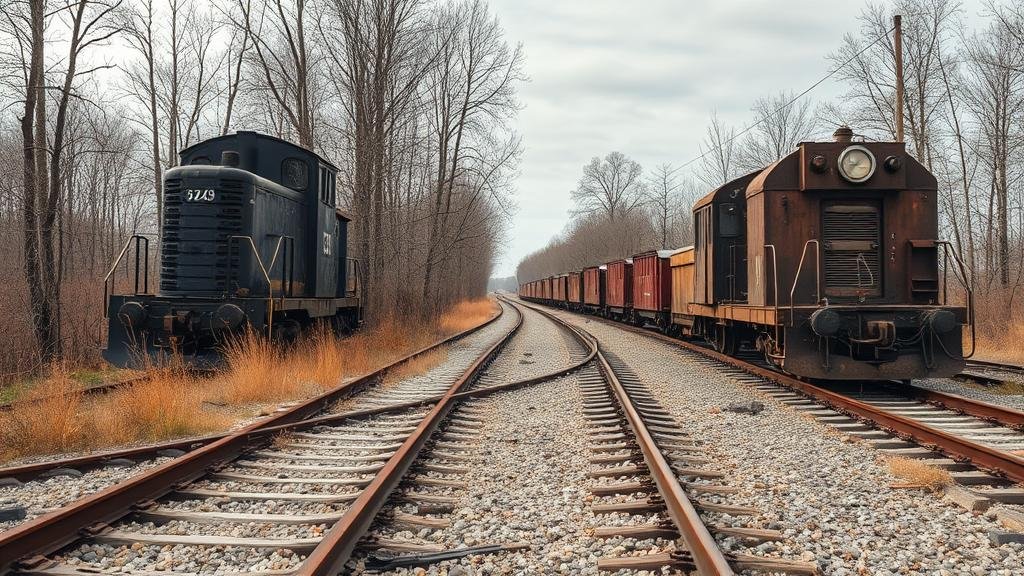Leveraging Abandoned Railroad Maps to Locate Forgotten Relics and Caches
Leveraging Abandoned Railroad Maps to Locate Forgotten Relics and Caches
The exploration of abandoned railroads offers a unique lens into historical geography and cultural landscapes. In particular, utilizing old railroad maps can assist enthusiasts in uncovering lost relics and caches. This article delves into the methodologies for effectively leveraging these maps, potential finds, and case studies demonstrating successful discoveries.
Historical Context of Abandoned Railroads
Railroads played a crucial role in the development of the United States during the 19th and early 20th centuries, significantly influencing trade, travel, and regional growth. For example, by 1860, over 30,000 miles of track had been laid, yet many of these lines fell into disuse by the mid-1900s due to industrial decline and urbanization. Today, these abandoned routes represent untapped resources for historians, archaeologists, and hobbyists alike.
Understanding Railroad Maps
Old railroad maps, dating back to the late 1800s and early 1900s, provide invaluable insights into past transportation routes, settlements, and significant industrial sites. The maps often depict not only the railway lines themselves but also surrounding features such as towns, rivers, and landmarks, making them a rich data source for locating potential caches of forgotten relics.
Methodologies for Map Utilization
Transforming historical maps into actionable treasure-hunting strategies involves several steps:
- Research and Acquire Maps: Seek out digitized or physical maps from historical societies or online databases such as the David Rumsey Map Collection.
- Cross-reference Current Maps: Overlay old railroad maps with contemporary geographical tools like Google Maps or GIS platforms to identify changes over time.
- Field Investigation: Conduct site visits to investigate former railway corridors, which often conceal objects like railroad spikes, sections of track, or personal artifacts.
Case Studies of Successful Locating Efforts
Many individuals and organizations have successfully leveraged abandoned railroad maps to locate significant historical relics. For example:
- The Benton & Eastern Railroad: In 2018, an amateur historian used maps from the 1920s to locate a buried steam engine in Benton County, Arkansas, once part of the Benton & Eastern Railroad.
- Mining Caches in Colorado: Railroads served both industry and passenger transport. In 2021, treasure hunters employed a 1905 railroad map to unearth mining tools along a former rail line in Telluride, Colorado.
Potential Finds and Relics
When searching these historical corridors, individuals may unearth various types of relics. Common finds include:
- Railroad construction tools
- Old railway ties
- Locomotive components
- Artifacts from nearby settlements
These can enhance our understanding of the socio-economic conditions during the peak of railroad expansion. Plus, the preservation of these items contributes to local historical knowledge and heritage.
Legal and Ethical Considerations
While excavating abandoned railroad rights-of-way can yield exciting findings, adherence to ethical guidelines and legal frameworks is paramount. Individuals should:
- Obtain necessary permits from local authorities
- Respect private property boundaries
- Document finds ethically and consider donating significant artifacts to local museums for preservation
Conclusion and Actionable Takeaways
Leveraging abandoned railroad maps serves as a powerful tool for locating forgotten relics and caches, offering a window into the past. Historical railroads not only shaped development but also left behind material culture ripe for rediscovery. By following structured methodologies and adhering to ethical guidelines, enthusiasts can engage in rewarding explorations, contributing to both personal insight and broader historical narratives.
In summary, individuals interested in this venture should:
- Invest time in acquiring and studying old railroad maps
- Prepare for field investigations armed with historical context and research
- Stay informed about legal obligations regarding the excavation of historical sites
Through these practices, the journey of uncovering forgotten relics can connect modern explorers with the rich tapestry of history woven by rusting tracks and abandoned stations.



